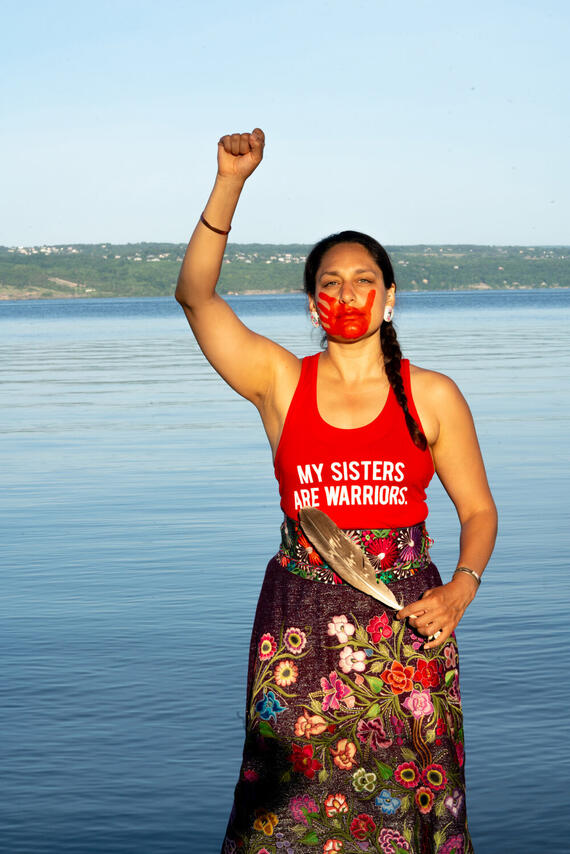Magnum Foundation Photographer Spotlight: Tahila Mintz and Garcia Pasture, USA

In 2022, World Monuments Fund (WMF) and Magnum Foundation announced that they were partnering to support local photographers around the world in documenting the sites on the 2022 World Monuments Watch and the communities around them.
Tahila Mintz, an Indigenous Yaqui and Jewish woman whose photographic work touches on themes of matriarchy, indigeneity, and the natural world, is one of this year’s 12 grantees. She hopes to explore these topics through documenting the lifeways and political actions of the Esto’k Gna people around Garcia Pasture, a sacred Tribal site located near what is now Brownsville, Texas. We spoke to Tahila as part of a series of interviews with the Magnum grantees. An excerpt of our conversation, edited for clarity and length, can be found here:
WMF: Your previous work has included the use of abstract chromogenic photograms to indirectly reflect Ceremony. What kinds of photographic techniques do you currently envision yourself using for your Garcia Pasture project?
Tahila Mintz (TM): I will do reportage style, but I wouldn't be surprised if I made large-format, long-exposure photographs so that the film can break down and other things can be seen. I came up as a photographer in reportage street photography; I still love making images that way, but [I also] create work that is based in a different rhythm and a different perspective. The photograms [show] non-linear time; it's not human-centric, it's not male-centric, it's not white-centric. It's in a place of equilibrium with the land and peoples.
WMF: Your earlier Woman of Water project examines the links between women, water, and Indigenous cultures. Can you talk about how you plan to explore these connections visually at Garcia Pasture?
TM: The youth [of the Tribe] are doing a walk for missing and murdered Indigenous women, and they've invited me to go. Land relationships and politics, youth and elder engagement, strong women—these are all things that feel like they flow together. Being with them on the walk on that day will be important to keeping a fluid narrative that includes so many components because all those things make the whole.
WMF: On the photography podcast Collective Eye, you recently spoke about decolonial elements in your work How do see your work as challenging dominant colonial power structures in the industry?
TM: I work in different ways, and one is as an educator. I start decolonizing primarily with the language day one of class, to take away words like “shooting” and “capturing,” this sort of aggressive taking that we do as people with cameras. Photography in a lot of ways is about control, right? It shouldn't be—there's framework that makes it that. Removing that [framework] is decolonizing the medium.
To read more interviews with the Magnum Fellows, click here.
Learn More
World Monuments Fund safeguards cultural heritage around the globe, ensuring our treasured places are preserved for present and future generations.
Sign up for our newsletter to receive regular updates on our projects, stories from the field, upcoming events, and more!
